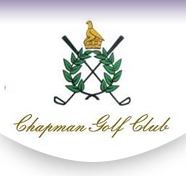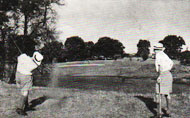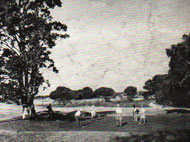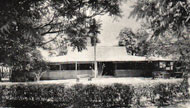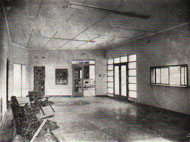About Chapman
History
The history of the Henry Chapman Golf Club began in May 1928, after prolonged and lengthy discussions between the Salisbury Council and the Railway Administration, lasting over a period of some four years, when the Golf Section of the Salisbury Raylton Athletic Club became an accomplished fact. Lieut.-Col. C. F. Birney, the then General Manager of the Rhodesia Railways, who incidently was responsible for providing a link of Railway Clubs from Beira to Broken Hill, excluding Bulawayo and Umtali, which were already in existence at the beginning of the 20th Century, opened the Golf Section on the 19th May, 1928, in the presence of some 200 guests and members. To give some idea of the size of Salisbury when the project was first mooted, the town covered a very restricted area stretching fom the kopje to the Police Headquarters. Seven suburbs, Avondale, Mount Pleasant, Rhodesville, Ardbennie, Hatfield, Parktown and the Western Commonage, with Avondale as the most popular residential area surrounded the town. Thus what are now thickly populated districts joining all the suburbs, were at that time heavily covered with indigenous trees and scrub bush. The conditions therefore which the first working Committee of the newly formed Golf Section had to face, with an initial grant of Two Hundred Pounds, necessitated clearing 121 acres of very rough ground; bridging and fording a fast running tributary of the Mukuvisi no less than fifteen times and shaping a course suitable to play the game of Golf. The Committee, under the Chairmanship of Mr. R. Talbot Wilson, assisted by Messrs. Jack Day, W. H. H. Melvill, E. C. Mitchell, F. Marnie, T. Todhunter, J. B. Crease, E. M. Saunders, and the Secretary A. Beeming, got to work on a difficult task which would have daunted larger numbers of less enthusiastic people. Part of their difficulties were removed by their good fortune in obtaining the services of the famous Golf Professional, Mr. Laurie Waters who, at that time, was engaged by the Salisbury Golf Club; it is recorded that their generous gesture was greatly appreciated. It is interesting to note that even at this stage, the Minutes of the Working Committee quote that the course would eventually become second to none in the country. they were certainly men of vision, their prognostications were correct. The first tee was made at the site of the present Government Printing Works, at that time part of Raylton sports ground. Crossing the Sinoia railway track and passing through what is now lower Eastlea, it eventually came on to what is now the present No. 15 Tee. There was an interesting short hole to the east of the Brickfields surrounded by tall blue gums and any shot that strayed from the hard and narrow path caused much heart-burning.
After moving into the new club house in November 1954 the two nines were changed over so that the eighteen holes began and ended at the club house. A period of consolidation followed, but within five years moves were afoot to make extensive course alterations. Many of the greens were rebuilt and new bunkers put in. The greatest change to take place was the alteration to the present 12th green and the 13th green which lay up against the fence close to the present day 14th tee.
In the early 1960s several differences arose with the Raylton Club and eventually negotiations were entered into for the members of Chapman to purchase the Club from the Railways. Early in 1963 it was agreed that the Railways would hand over the course and all facilities to the members for the sum of £35 000. A loan was negotiated and the first independent Annual General Meeting was held in March 1963. To this day the Railways retain the right to nominate a certain number of members at preferential rates.
In 1964 after the imposition of a water levy on all members, full water reticulation was introduced to the course which very soon had dramatic effects. Not only was the grass kept green for most of the year, but tree planting projects came to fruition and the course became tighter year by year. No longer was it a feature of Chapman to have gaping cracks on the fairways during the winter months.
In 1967 the Captain at the time, Willie Fulton, negotiated with the Municipality for the land to the south of the seventh hole and this was given to the club later in the year. A major programme of course alteration wa begun. The present 8th hole was constructed and the 9th became a par 5. At the same time the 3rd hole was changed from its former position towards the club house to its present location. the 16th hole was lengthened by the construction of the present tee and the 18th also lengthened by taking the tee back and reconstructing the green a few yards further back. The 5th, which had previously been a par 5, was shortened and turned into a par 4. All these alterations were completed in time for the staging of the Dunlop Masters Tournament in 1969.
By the early 1970s the membership of the Club had again outgrown the facilities of the club house, particularly as far as the changing room facilities were concerned. Despite a certain amount of opposition from certain quarters it was decided to go ahead to extend the club house by adding a bar and changing rooms.
By the early nineties the greens had not changed for 20 years. It was decided at a Special General Meeting that the greens and fairways should be redesigned and bent grass planted on the new greens. The major changes to the course were undertaken by one of Southern Africa’s leading golf course architects, Peter Matkovich. The project began in August 1994 and completed later in 1995, with members playing on temporary greens in the interim.
It also happened in 1995 that a chip pan left on overnight in the clubhouse kitchen ignited and the resultant fire caused considerable damage to the kitchen and surrounding area. Had it not been for the vigilance of a member who spotted the fire, the clubhouse would have been gutted.
The board then took a decision to use the opportunity to redesign and rebuild the clubhouse to allow for the current membership and the anticipated future growth. The funding was to come mainly from a generous bequest left to the club by a wealthy and dedicated member, the late Freddie Arian, after whom the lounge in the club is named in honour of what at the time was a substantial donation. Further funding was required due to high inflation and debentures were issued to raise the balance of the required capital expenditure.
The new design raised the club from the previous two to three levels, as it is at present, and allowed for bigger and better function rooms, new ablutions for both the men’s and women’s changing rooms, as well as much improved facilities for the staff and caddies. The Pro Shop was also expanded and modernized. The hub of the club was the bar, and this was also expanded with the bar itself forming a horseshoe shape in the centre.
At the same time, the club took the opportunity to expand, demarcate and tar the parking areas, as well as improving the security of the area.
The new clubhouse and it’s modern facilities has given the club the opportunity of opening the club to outside functions such as weddings, conferences and similar events, generating much needed revenue for the club.
The combination of the modernized course and new clubhouse has brought the whole Chapman experience into the 21st century and will serve the members’ needs for many years to come.
